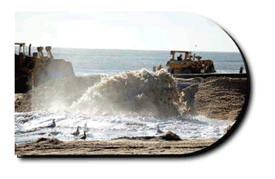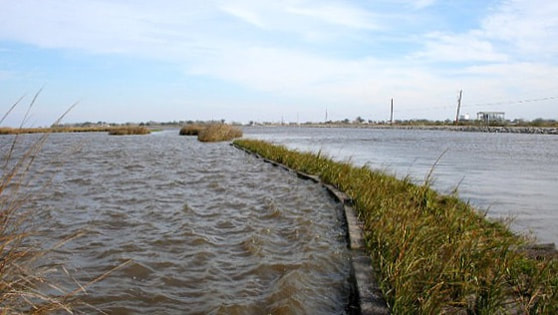How Shore Protect Team can Save You Time, Stress, and Money.
9 Easy Facts About Shore Protect Team Explained
Table of ContentsIndicators on Shore Protect Team You Should KnowSome Known Facts About Shore Protect Team.About Shore Protect TeamThe Single Strategy To Use For Shore Protect TeamThe Single Strategy To Use For Shore Protect TeamA Biased View of Shore Protect TeamThe Facts About Shore Protect Team Revealed
Reduction in property value: As the area tourism is affected by disintegration, so after that is the economic situation. Buyers are less likely to look for a coastline house that could be destroyed anytime by the upcoming flooding and erosion emergency. In turn, residential or commercial property worth can go down profoundly and impact the whole area.Whether a beach is just tiny and crowded or has to shut totally for the security of the environment and neighboring buildings, this greatly influences tourist. In turn, regional economic climates are impacted (https://www.bizthistown.com/united-states/katy/construction-engineering/shore-protect-team). Risk of injury: The enhanced threat of flooding and architectural failures creates an increased threat of injury to nearby travelers and neighborhood participants

Shoreline stabilization is straight related to their task. Waterside resorts: Because shoreline erosion influences tourist, it affects the success of waterside hotels.
The Single Strategy To Use For Shore Protect Team
Coastal business organizations: No travelers suggests no company. Coastal state parks: State parks that exist along coastlines are at threat of damage.
Hard stablizing makes use of man-made frameworks as protection to regulate erosion. Many kinds of difficult stabilization like seawalls and sheet steel are not optimal for coastline stablizing.
Some Ideas on Shore Protect Team You Should Know
There's additionally insufficient evidence of their effectiveness depending upon the kind of coastline and regional conditions. Difficult stablizing techniques often tend to be much more challenging to install and do not match the all-natural visual, protruding like a sore thumb and damaging neighborhood ecological communities in lots of circumstances. Beach sustenance is the process of adding shed sand and debris back to beaches after erosion has occurred.
TrapBags help in the process of beach sustenance by shielding natural communities and allowing plants to expand. They're: Ecologically friendly: You can utilize native soil both to border and to load the TrapBags.

See This Report on Shore Protect Team
They can additionally be mounted without any hefty machinery. Inexpensive: TrapBags are perfect for both little and large areas of coastline.
The proper seawall layout relies upon location-specific elements, consisting of bordering erosion processes. There are three main kinds of seawalls: vertical, curved, tipped, and mounds (see table below). A report released by the United Nations Atmosphere Programme (UNEP) suggests that the tsunami of 26 December 2004 caused less damage in the locations where natural obstacles were present, such as mangroves, reef or coastal vegetation.
Natural obstacles, such as coral reefs and mangrove forests, avoid the spread of tidal waves and the circulation of coastal waters and alleviated the flooding and surge of water. A cost-benefit method is a reliable method to identify whether a seawall is suitable and whether the advantages are worth the expense.
The Basic Principles Of Shore Protect Team
A seawall is a fixed feature which can contravene the dynamic nature of the coastline and hinder the exchange of sediment between land and sea. The table listed below sums up some positive and negative effects of seawalls which can be made use of when comparing their effectiveness with other seaside management alternatives, such as beach nutrition. [] Advantages and negative aspects of seawalls according to Short (1999) Advantages Disadvantages Lengthy term remedy in comparison to soft coastline nutrients.

This can create coastlines to dissipate, rendering them ineffective for beach goers. Generally, seawalls can be an effective means to manage seaside erosion, yet just if they are constructed well and out of materials that can stand up to the force of recurring wave energy.
Shore Protect Team Fundamentals Explained
Combined with a high building cost, this has led to boosting use various other soft design seaside management options such as coastline replenishment. Seawalls are built from numerous products, the majority of generally enhanced concrete, rocks, steel, or gabions. Other feasible building and construction materials consist of vinyl, wood, aluminum, fiberglass composite, and naturally degradable sandbags made from hemp and coir. The suitable seawall layout relies upon location-specific facets, consisting of surrounding disintegration processes. There are three primary kinds of seawalls: upright, curved, tipped, and piles (see table below). A report released by the United Nations Environment Programme (UNEP) recommends that the tsunami of 26 December 2004 caused less damage in the areas where all-natural obstacles were present, such as mangroves, coral reefs or seaside greenery.
All-natural barriers, such as coral reefs and mangrove woodlands, stop the spread of tidal waves and the circulation of coastal waters and reduced the flooding and rise of water. A cost-benefit technique is an efficient means to figure out whether a seawall is suitable and whether the advantages are worth the expenditure.
Top Guidelines Of Shore Protect Team
A seawall is a fixed function which can contrast with the vibrant nature of the coast and hamper the exchange of sediment in between land and sea. Benefits and downsides of seawalls according to Short (1999) Benefits Negative aspects Lengthy term option in contrast to soft beach nourishment.

This can cause beaches to dissipate, providing them useless for beach goers. Typically, seawalls can be an effective way to manage seaside disintegration, but only if they are built well and out of products that can endure the pressure of ongoing wave power.